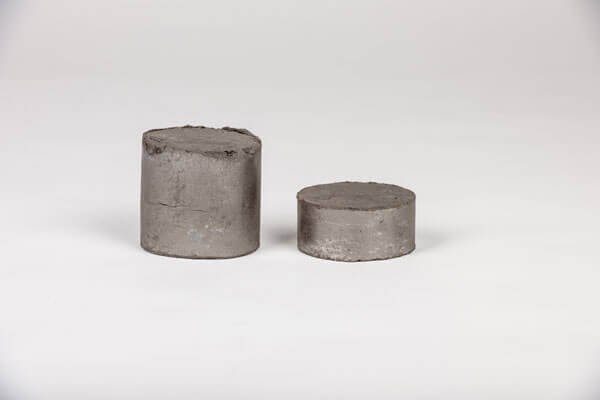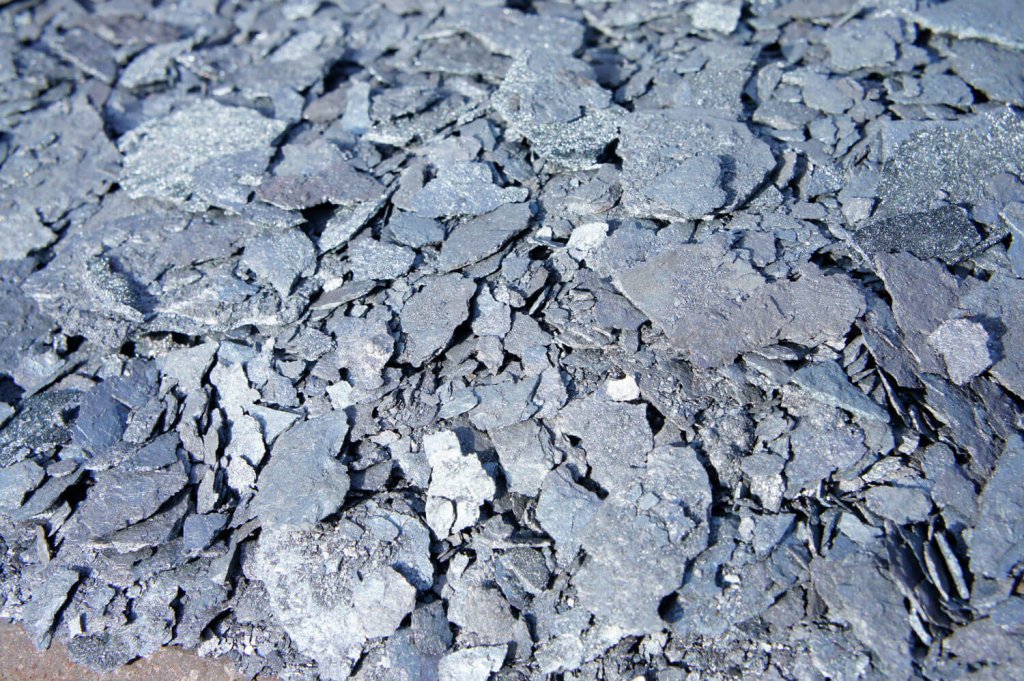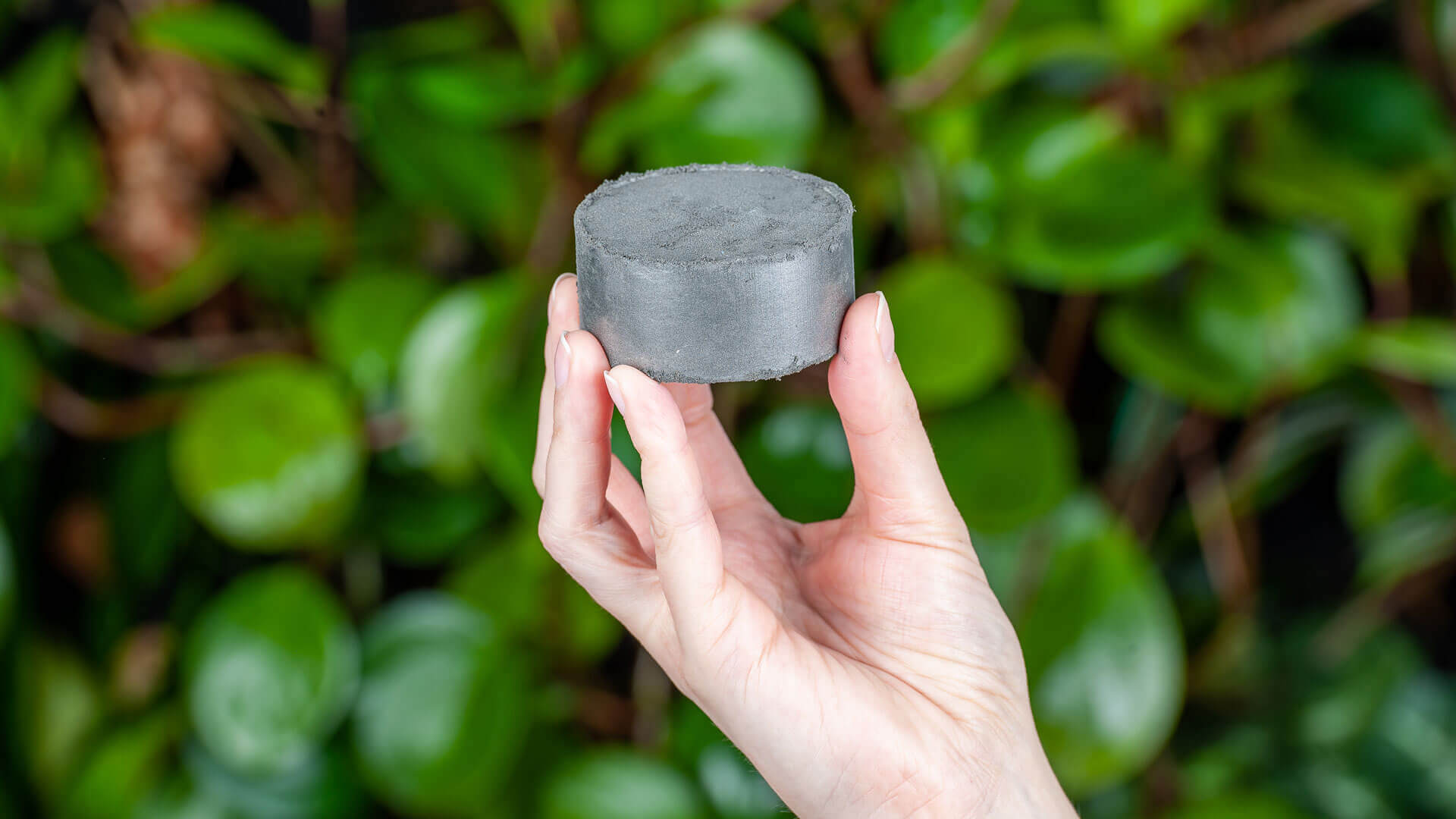Recycling of by-products: “Waste” with added value
Scale, dust, and slag can be used as secondary sources of raw materials—by-products that have traditionally been seen as waste often contain valuable resources. At HPM, we have long been committed to recycling the by-products from our production sites and reintegrating them into the value chain. The inSPire Circular Economy team is working to develop this topic further across several projects. In this article, we take a look behind the scenes.
The responsible use of resources has always been of great importance to the companies of the HPM division. For example, at voestalpine BÖHLER Bleche, a tried-and-tested process for recycling by-products has been in place for several years: Numerous sheets are ground daily in the production facilities, producing grinding waste in the form of metal shavings. These “chips” are collected sorted by grade and pressed into briquettes, which enables the recovery and reuse of the metals, e.g. in the EAF melt.
Nina Wilding, responsible for environmental management at voestalpine BÖHLER Bleche, describes this process: “At voestalpine BÖHLER Bleche, we have been striving for many years to actively close the cycle of by-products and thus implement environmentally relevant measures. By collecting and treating grinding residues sorted by grade, we no longer have to dispose resulting by-products as waste but can keep them in the product cycle in the form of briquettes. This allows us to increase our recycling rate.”
“VIENNESE MIX” AS A CHALLENGE
The prerequisite for briquetting is that the by-products are collected by grade—and this is one of the biggest challenges when it comes to recycling potential secondary raw materials. Often, the by-products at HPM plants cannot be sorted directly at their point of accumulation, because a wide variety of materials are processed on the same units and space is not always available for the collection of different fractions. This results in the so-called “Viennese Mix”: a mixture of different alloy elements from all processed steel grades.
For recycling, such a mixture represents a major challenge, which the Circular Economy team has taken on. For example, intensive work is being done on solutions and optimized processes so that raw materials contained in the by-products can be fed back into the production process.
REALIZING POTENTIAL
This has several advantages: On the one hand, primary resources are conserved and the security of supply of key materials is ensured in the long term. On the other hand, we become more independent of international market developments and political influences on the raw materials market. Additionally, we also reduce our CO2 emissions using alternative methods, such as the hydrometallurgical recycling of metals from dust (more on this below). Ultimately, if the materials are recycled, landfill costs are eliminated, which leads to cost avoidance.
As Josephine Müller, Head of the Circular Economy Team at inSPire, sums up: “The recycling of by-products is nothing new for the steel industry. What can be kept in the product cycle with little effort has been recycled for a long time. The challenge at HPM lies in the variety of grades, elements and contaminants. I find great motivation in tackling these challenges and thinking in new directions.”
A PROJECT FOR THE RECYCLING OF GRINDING WASTE
Reusing waste from grinding processes is of significant economic and environmental interest for HPM, but also for other voestalpine divisions. A large-scale project is dedicated to precisely this topic. In all HPM plants, grinding waste is identified, which is currently not recycled and therefore must be disposed of. The aim is to develop solutions to recycle this grinding waste and to use the raw materials contained within it.
“The fact that waste from grinding processes can be fed into material recycling supports the ‘business model’ of electric steel production, which is already strongly geared toward a circular economy. Of course, the processing of waste into secondary raw materials is not limited to our grinding waste. Opening up new cycles is our task for working toward a sustainable future,” says Florentin Artner, responsible for coordinating the circular economy at voestalpine BÖHLER Edelstahl in Kapfenberg.
These by-products are often present in the form of sludge. This is because dust is created when metals are ground, and this dust inevitably comes into contact with water or oils. On the one hand, these liquids are needed to cool the machines and, on the other hand, to bind the dust which, as a dry product, constitutes hazardous waste. However, the moisture makes it more difficult to extract the elements from the waste. An additional challenge, as already described above, is the heterogeneous composition of the dusts and sludges. However, separating the by-products is worthwhile: They contain valuable alloy elements such as nickel, chromium, and vanadium.
UNDER HIGH PRESSURE – FURTHER DEVELOPMENT OF BRIQUETTING

As mentioned at the beginning, grinding waste is recycled in some plants of the HPM division and fed back into the raw material cycle as briquettes. The production of the briquettes itself is demanding: In the first step, the metals should be separated according to their variety. After this step, individual requirements for further processing apply to each material: From drying to pressing to transport, it is vital to observe material properties and configure the briquetting process accordingly.
Given economic and natural conditions, this is difficult for the companies in the division to implement. As part of our expansion of the recycling of resources, we are planning further development of briquetting for our plants. In this way, we want to gradually keep more and more valuable material within the Group by means of closed cycles, and thus reduce the use of primary raw materials as much as possible.
PROJECT HYDRO-STÄUBE: HYDROMETALLURGY AS AN APPROACH TO A SOLUTION
Since January 2023, the HydroStäube project has been running in cooperation with the Montanuniversität Leoben and K1-MET, funded by the Zukunftsfonds Steiermark. It deals with the hydrometallurgical recycling of supply-critical metals from dust generated by the iron and steel industry.
“Hydrometallurgical” refers to processes in which acids and other liquids are used to dissolve elements from mixtures or, in this case, to separate dust. In classical pyrometallurgical processes, this is not possible because heat is used, and the individual elements are partially melted together.
Compared to this conventional method, hydrometallurgy offers further advantages: It operates without natural gas and coal, so it does not require fossil fuels, which in turn is a step toward being more environmentally friendly, as significant amounts of CO2 can be saved. One of the main aims of the HydroStäube project is therefore to find a more sustainable alternative to the previous processes, i.e., to recycle as many components of the dust as possible with low energy consumption.
HIGH-VALUE EAF DUSTS
The dusts concerned in this project are by-products from the Electric Arc Furnace (EAF). Scrap is melted in the furnace by means of electrically generated heat. In this process, many substances evaporate, which leads to the formation of dust containing valuable elements such as iron, chromium, nickel, vanadium, tungsten, and zinc.
Until now, zinc has been the focus of recycling, so the other alloys are usually not available for reuse. This is where the HydroStäube project starts to make the valuable materials available for reuse by means of alternative processes. The potential is immense: between 10 and 70 kilograms of dust per metric ton of stainless steel are produced.
SUSTAINABLE DEVELOPMENTS
When it comes to recycling by-products, the project team is investigating both the separate recovery of valuable metals and joint recovery for the possible subsequent production of ferroalloys. These are iron alloys that are often used in steel production.
During process development, different sustainability aspects are considered. The aim is to develop a process that conserves primary resources through the comprehensive recovery of valuable metals and has the lowest possible energy requirement. The elimination of carbon-based reducing agents is also intended to significantly reduce CO2 emissions. Additionally, the elimination of landfilling through the reuse of by-products results in significant cost savings for the company.
The elements contained in the by-products have a major role to play on the path to greater sustainability. For example, nickel is becoming an ever more important asset for the energy transition thanks to its use in batteries, which are used, for example, in electromobility and energy storage. Nickel is also found in alloys needed, for example, in geothermal energy or hydrogen technology.
CLOSING CYCLES, CONSERVING RESOURCES
The further development of alloy recycling and the efficient use of resources are of great importance to us here at HPM. The advantage is twofold, providing on the one hand economic advantages, and on the other, improvements in ecological sustainability. These two pillars are closely linked in our projects, and we are highly committed to driving them forward both within the division and with our external partners as we will continue to focus on achieving the best possible utilization of our by-products.

